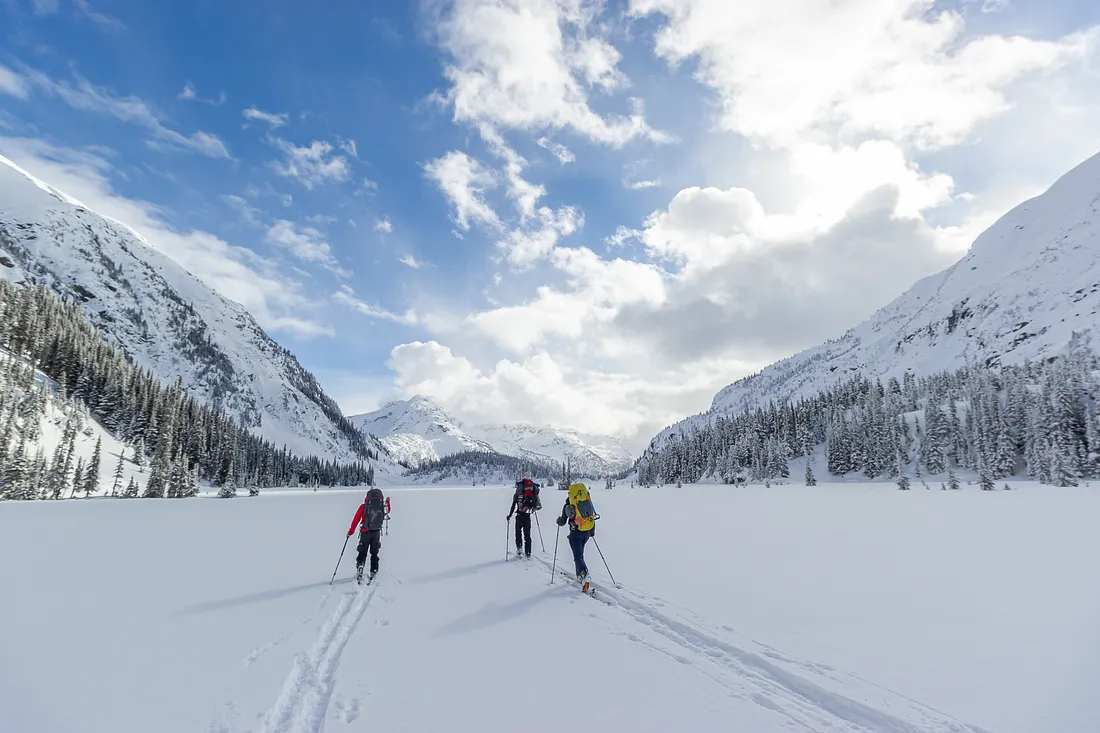Quick heads-up: some of the links on this page are affiliate links. If you make a purchase through them, we may earn a small commission (at no extra cost to you). This small bit of income helps keep our site running.
Tarp Camping in Winter

Tarp camping in winter conditions isn't for everyone, but if you're the type that gets a kick out of a little type-2 fun, then this guide is for you. I've spent my fair share of nights under a tarp in cold winter conditions, and I've learned a thing or two about staying warm, dry, and sane. Here's what I think about when I go winter camping.
Why a Tarp
Some people might choose a tarp just for the challenge of the experience, but there are some great reasons to pick a tarp over a tent in the winter. First and foremost, tarps are light! Winter tents tend to be very heavy, so if you want to go light and fast, definitely consider a tarp.
Winter tents are also one of the most expensive pieces of outdoor gear you can buy, while winter tarps are usually quite cheap by comparison. So if you want to save a money and embrace simplicity, a tarp might be a great choice for you.
Choosing Your Tarp
You'll want a tarp that's durable, waterproof, and large enough to provide ample coverage. I've had good experiences with the MSR Thru-Hiker Wing. It's lightweight, offers plenty of space, and can withstand a decent amount of snow load. Remember, your tarp is your first line of defense against the elements, so don't skimp here.
If you don't mind spending a little more money, the Hyperlite Mountain Gear UltaMid 2 is an excellent choice. It's ultralight and designed for specifically for winter use. But it's not cheap.
See the Hyperlite Mountain Gear UltraMid 2 in action.
Site Selection
Picking the right spot to set up camp is way more important than most people think for staying warm. Look for natural wind barriers like rock formations or dense patches of trees. Avoid valleys where cold air settles and hilltops that are exposed to wind. Snow can both be an insulator and a freezer, so use it to your advantage. I like to compact a flat area for the tarp and then build up snow walls on the sides for added insulation and wind protection.

Setting Up Your Tarp
The A-frame setup is a classic for a reason. It's stable in the wind and sheds snow well. Make sure your tarp is angled and taut to prevent snow accumulation, which can weigh it down and cause all sorts of problems. Trekking poles are great for winter backpacking and they double as supports for your tarp setup. I like the Black Diamond Alpine Carbon Corks, but any extendable trekking pole will do.
Sleeping System
Your sleeping pad and bag are just as important as your tarp. A quality sleeping pad with a high R-value, like the Therm-a-Rest NeoAir XTherm, is worth its weight in gold. It'll keep you insulated from the ground, which is a major source of heat loss. Pair it with a sleeping bag rated at least 10 degrees lower than the coldest temperature you expect. We've got a guide on winter sleeping bags that you might find useful.
Staying Warm
Staying warm under a tarp in winter is all about layers and smart thinking. Wear moisture-wicking base layers, insulate with a down or synthetic jacket, and always keep a beanie and gloves nearby. A hot water bottle in your sleeping bag can add a lot of heat and will keep you cozy for awhile.
Tarp camping in winter is not without its challenges, but with the right gear and preparation it's actually a really fun experience.
